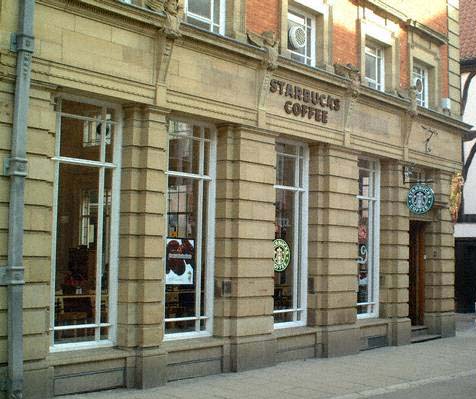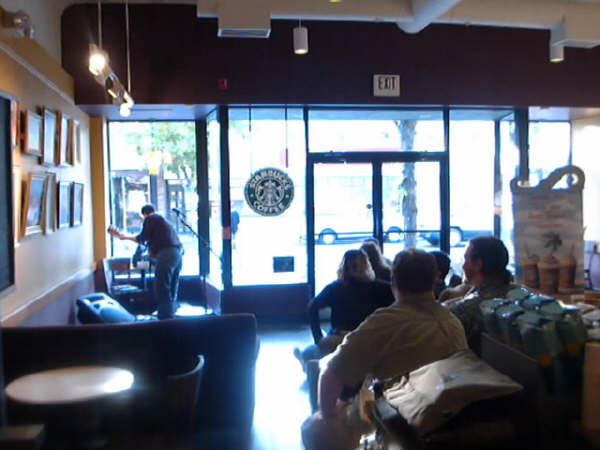
Starbucks
Store Front, York




Starbucks Products




Inside view of Starbucks, Melrose Center, LA
The middle /upper class gentrifiers of the East Village are a perfect example of Starbucks' top consumers. Starbucks is appeals to them by offering blends of coffee associated with the minority populations and lifestyles to which the middle class was originally attracted (ex. blends from Kenya, Guatemala, and Ethiopia). "Consequently, the corporate-driven transgression of low and high culture has appropriated and transformed symbols and images from the once 'hidden' or submerged urban cultures into global commodities"(Mele, 286). Starbucks conveniently caters to this marginalized appeal through the music they say that they "can't stop listening to" which consists of mostly African American talents ex. The Total Experience Gospel Choir, and Songs and Play by Langston Hughes. The "different cultural practices [become] ...stylized products"(Mele, 286). Starbucks is greatly successful because it is highly skilled at this balancing act of attracting appeal through its diversity of product, and at the same time, creating a setting that is comforting and familiar.
There are, however, many that might feel uncomfortable in any given Starbucks. Because Starbucks attracts and satisfies a certain class of people, it commands a certain type of behavior from those who patronize its stores. In a panoptical manner, its classy demeanor and regular customers, instill a kind of discipline. A loud, rambunctious individual who enters into the Starbucks atmosphere of money and intellectualism would realize at once that he was acting inappropriately, and most likely tone down his behavior. It seems that there is a universal understanding of what is socially acceptable in every type of environment. That of Starbucks can be seen through the lifestyles and appearance of those who regularly frequent its stores. Jane Jacobs would make reference to the large, open windows that give a clear view to the street and those passing by. The windows are an architectural characteristic that make customers feel safe upon entering the store, and eventually sitting to enjoy their drinks. From a panoptical standpoint, this aspect of Starbucks also commands civil behavior upon those walking by; since their actions can be monitered by those sitting inside. Starbucks is indirectly instilling discipline through its patrons. "So to arrange things that the surveillance is permanent in its effects, even if it is discontinuous in its action; that the perfection of power should tend to render its actual exercise unnecessary; that this architectural apparatus should be a machine for creating and sustaining a power relation independent of the person who exercises it;" (Foucault, 201). In more modern terms, the panoptical idea has evolved into the "disciplinary society." "At the other extreme, with panopticism, is the discipline mechanism:a functional mechanism that must improve the exercise of power by making it lighter, more rapid, more effective, a design of subtle coercion for a society to come. The movement from one project to another, from a schema of exceptional discipline to one of generalized surveillance, rests on a historical transformation: the gradual extension of the mechanisms of discipline throughout the whole social body, the formation of what might be called in general the disciplinary society" (Foucault, 209).